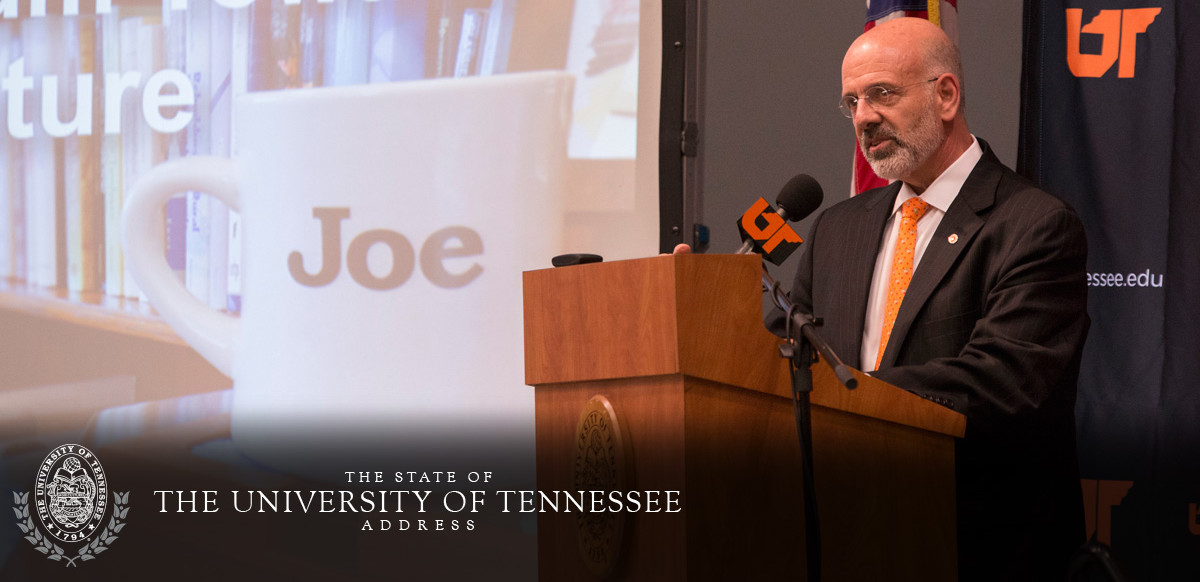Closing a Funding Gap
Over the five years he’s been president of the University of Tennessee, Joe DiPietro’s most unexpected challenge came from a paradigm shift in funding in the same period.
While the massive, national economic downturn of 2008 had begun to abate in 2011, DiPietro said he realized shortly into his presidency that the fiscal circumstances he faced were unlike any he’d seen in 20 years of public higher ed administration.
“I came into this job fairly steeped in the fact you counted on the state to help you, but then you start to realize this wasn’t going to be another one of those lean-to-good cycles I’d seen so many times before,” he said. “Most states don’t have a choice to help higher ed much more than they are, because most have just what we do in Tennessee: a structural deficit in the budget.”
But “the real wake-up moment,” DiPietro added, came over lunch with Bill Fox, an economist and director of the UT Knoxville Center for Business and Economic Research.
Fox walked DiPietro through the revenue and budget structures for Tennessee state government, which has no constitutional mandate to fund higher education.
“He said, ‘There’s a structural deficit in the state budget, Joe, and higher ed’s discretionary, so don’t count on the typical return to funding levels as great as they have been in previous times,’ DiPietro said. “What that told me was we have to figure out what to do about the problem on our own.”
The problem: an estimated $247.5 million funding gap by 2025, assuming no more than 3 percent tuition increases, a 3 percent cap on salary increases and no additional state funding.
That realization led DiPietro to develop a “Budget Advisory Group,” a collection of voices inside and outside the University who gave input on critical UT needs and opportunities. The result was a set of UT budgetary boundaries enacted for the fiscal year that began July 1, 2015. At the same time, enhancing efficiencies while maintaining excellence remains a focus.
At present, the University is about midway through the first of two fiscal years in which the self-imposed budget boundaries are to remain in place. The fiscal year that begins on July 1, 2016 will be the second of the two-year approach. Following that, the impact of the approach over two years will be reviewed and any needed adjustments made.

